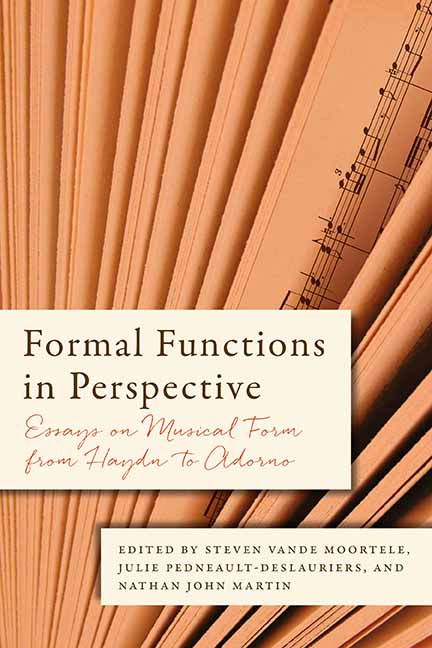Book contents
1 - “Functial Formanality”: Twisted Formal Functions in Joseph Haydn’s Symphonies
Published online by Cambridge University Press: 26 May 2021
Summary
Introduction
Central to William E. Caplin's concept of formal functionality is the notion that “musical form directly engages our temporal experience of a work inasmuch as its constituent time-spans have the capacity to express their own location within musical time.” As Caplin explains, “a composer's ability to realize in a convincing manner these kinds of temporal multiplicities accounts for experienced listeners (that is, those who are familiar with the host of compositional conventions informing this style) being able to discern quickly just where a particular passage lies within the overall temporal extent of a work.”
Accordingly, whether a passage functions as a beginning, middle, or end depends not merely on where it occurs within a composition but also on its harmonic, melodic, rhythmic, textural, and rhetorical profile. For instance, in most cases a subordinate theme functions as such not simply because it appears after a main theme but also because it possesses qualities that are typical of a subordinate theme. This can readily be tested by considering a normal sonataform exposition and imagining how it would sound if the main theme and subordinate theme were swapped (making the appropriate transpositions). In most instances the results would be strikingly unusual, to say the least, and the same would be true if one were to imagine swapping segments on higher or lower levels of structure.
But what can be established may also be disestablished, and crafty composers at times seem to seek out the strikingly unusual by twisting conventional formal functions. In some cases the formal function of a passage is clear, but nevertheless realized in a deformational manner. Put differently, in some situations the formal function is strongly supported by certain features, but undermined by others—for instance, when a sense of beginning that is firmly suggested by repetition structure and gesture nonetheless is counteracted by harmonic and rhythmic elements. Other times the departure from the norm is so drastic that the formal function itself becomes hazy, to the extent that it may be difficult to discern whether a given passage acts as a beginning, middle, or end.
Instances in which a conventional formal function is undermined do not simply represent alternate formal possibilities.
Information
- Type
- Chapter
- Information
- Formal Functions in PerspectiveEssays on Musical Form from Haydn to Adorno, pp. 11 - 36Publisher: Boydell & BrewerPrint publication year: 2015
Accessibility standard: Unknown
Why this information is here
This section outlines the accessibility features of this content - including support for screen readers, full keyboard navigation and high-contrast display options. This may not be relevant for you.Accessibility Information
- 2
- Cited by
